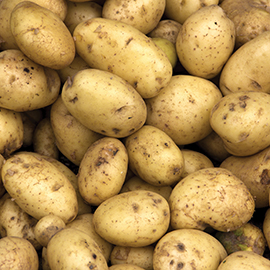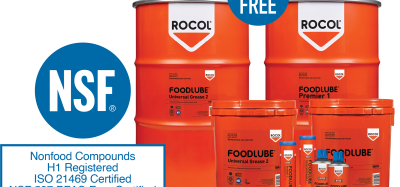Managing foreign body contamination risk in the food chain
- Like
- Digg
- Del
- Tumblr
- VKontakte
- Buffer
- Love This
- Odnoklassniki
- Meneame
- Blogger
- Amazon
- Yahoo Mail
- Gmail
- AOL
- Newsvine
- HackerNews
- Evernote
- MySpace
- Mail.ru
- Viadeo
- Line
- Comments
- Yummly
- SMS
- Viber
- Telegram
- Subscribe
- Skype
- Facebook Messenger
- Kakao
- LiveJournal
- Yammer
- Edgar
- Fintel
- Mix
- Instapaper
- Copy Link
Posted: 30 June 2015 | Simon Lott, Commissioning Editor, New Food | No comments yet
In May, UK supermarkets including Sainsbury’s, Tesco, Morrisons and Waitrose were forced to recall a variety of products with potato ingredients due to the presence of small metal pieces. While in this instance, this did not lead to any public health problems, such incidents are a constant concern for manufacturers and regulators alike, so what can be done to mitigate foreign object contaminant risk in the food chain.


The evolution of food manufacturing technology and process refinement over time has done a great deal to minimise the challenge of foreign bodies in the food chain. However, accidents and oversights can always occur, and every year a number of product recalls are required when unexpected items are discovered in foods, potentially leading to public health risks, costly recalls and damage to consumer confidence.
According to the UK Food Standards Agency’s (FSA) Annual Report of Incidents, there were 78 incidents of ‘physical contamination’ in the UK in 2014, leading to six recall information notices (RIN). 18 of these were due to presence of pests, with contamination by metal, glass and plastic recorded in 16, eight and six incidents respectively. To put this into context, the FSA was notified of and investigated 1,645 food, feed and environmental contamination incidents overall in 2014, issuing 23 RINs, 14 of which were for microbiological contamination.
According to the FSA, the source of the contamination in the recent potato product incident was traced back to the failure of a piece of processing equipment used to blanch the potatoes at an ingredient supplier. This led to pieces of metal breaking off the equipment and into the product line. According to a statement made by Sainsbury’s, the contamination was revealed when what it described as “a very small piece of metal” was found in a pack of an own brand fish pie during quality control checks. Although this was the only product confirmed to be contaminated, the discovery was enough to require the recall of 42 other products sold by Sainsbury’s, and a number of other items sold by Tesco, Waitrose and Morrisons, including many ‘own brand’ products.
A recall of this size does demonstrate how seriously the problem is taken by all parties, but given the costs (financially, and potentially to consumer health) of doing so, also serves to highlight the importance of monitoring processes at all stages of production. When asked how incidents like this are identified and discovered, an FSA spokesman explained: “The FSA works closely with consumer organisations, industry and enforcement authorities to identify vulnerabilities in the food chain and mitigate risks for the consumers. We normally receive notification of incidents from other authorities and the industry. Food business operators have a legal obligation to inform the competent authorities if they have reason to believe that a food which they have imported, produced, processed, manufactured or distributed is not in compliance with food safety regulations.”
The FSA was also keen to stress that no reports of illness were linked to the incident, and that a full root cause analysis had been carried out by the supplier. However, it did also point to a weak point in the process, adding that: “We encourage the industry to continuously maintain and review procedures so that they are fit for purpose and give the best protection to the consumer possible. Food businesses need to have processes in place to ensure they manage the risk of this type of incident. However, in the case of the recent potato product recall, the pieces of metal were very thin (less than 1mm), which is why they were not identified by metal detectors.”
There is no single technology that is perfectly ideal for foreign body detection, and such a statement clearly indicates that food manufacturers should evaluate a variety of technologies when designing product lines, although common sense approaches, such as adhering to HACCP procedures and use of separation systems should also serve to significantly minimise risk. Most HACCP procedures involve metal detection as part of their criteria, but it can be challenging to implement correctly, and detectors need to be calibrated, which can be difficult when looking for unknown contaminants that could have a variety of origins. The effectiveness of detection for example, is influenced by the orientation and shape of fragments, while stainless steel is hard to detect and other ambient factors including humidity and electrical disturbances from processing machinery can influence sensitivity. Choice of detector type is also a factor, although balanced coil detectors are popular due to their relatively high sensitivity and ability to detect metal in a variety of packaging types.
In practice, magnets are a simple and relatively cheap way of identifying ferrous objects, though their strength requires tailoring to the production line, with a suitable reach needing to be defined. As they also attract ferrous objects, collection and analysis of contaminants is relatively simple. The US FDA’s guidelines2 recommend that in the case of metal fragments, the effectiveness of passing the product through a screen, magnet or flotation tank also varies in efficacy depending on the product, i.e. that these processes are more suited to liquids, powders or other products where fragments cannot become embedded.
Other systems, which can also detect non-metal objects, include optical sorting systems that use cameras or lasers to separate unwanted objects if they fall outside of a specific range of size, shape or colour. As such, they need to be tailored to a sensitivity that can differentiate between product and any potential contaminant. X-ray and microwave reflectance systems can both be useful for detecting and locating a large range of objects in high throughput environments. Microwaves are especially useful for identifying small objects, however at present there are few options available for customisation and a limited number of suppliers. In contrast, detection of small objects with X-ray systems can be difficult to achieve, but the availability of such systems and modelling software which can minimise user intervention has expanded its use. Ultrasound however is a popular alternative, offering similar functionality while being currently cheaper, safer and easier to implement.
Nuclear magnetic resonance (NMR) imaging has the advantage of also being able to simultaneously perform some quality analysis tasks, such as identifying defects or evaluating the health of fruit and vegetables, but is limited by cost. Similarly, surface penetrating radar can be used for quality checking tasks by using low power microwaves to examine the dielectric properties of products, though its efficacy can be influenced by the homogeneity of the products, and the properties of some packaging materials.
However, foreign object detection may not be as simple as just investing in technology, as Managing Director of Bunting Magnetics Europe, a specialist supplier of magnetic equipment, explains: “Metal contamination is possible at every stage of a food processing line. It can be present in the raw material infeed or can be introduced during the process, as was evident in the recent contamination issues for the potato products. Equipment does fail and when it does, metal can be introduced. There are solutions, but it is not as simple as just installing one item of equipment. The whole process needs to be evaluated and potential metal contamination ‘hot spots’ identified. Then it is possible to propose specific designs of magnetic separator or metal detector. Another challenge for food processors is that products and processes change and so regular reviews, often annual, of metal separation solutions are required. This is a proactive way of ensuring that the end food product is metal free.”
References
- Food Standards Agency. Annual Report of Incidents (2015). Available at: https://www.food.gov.uk/news-updates/news/2015/14032/fsa-annual-report-of-incidents-published
- Food and Drug Administration. Fish and Fishery Products: Hazards and Controls Guidance, 4th Edition. Available at: http://www.fda.gov/downloads/Food/GuidanceRegulation/UCM251970.pdf








